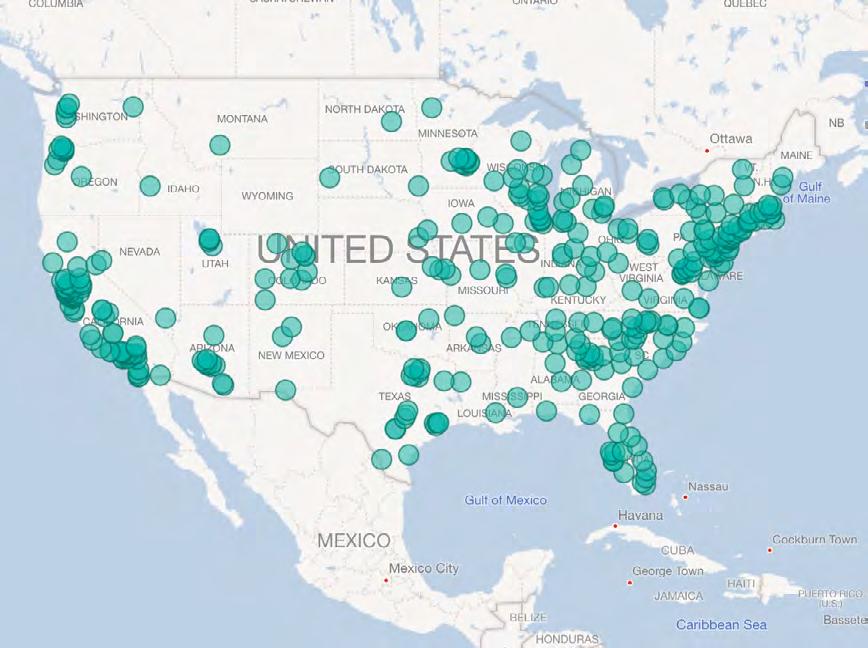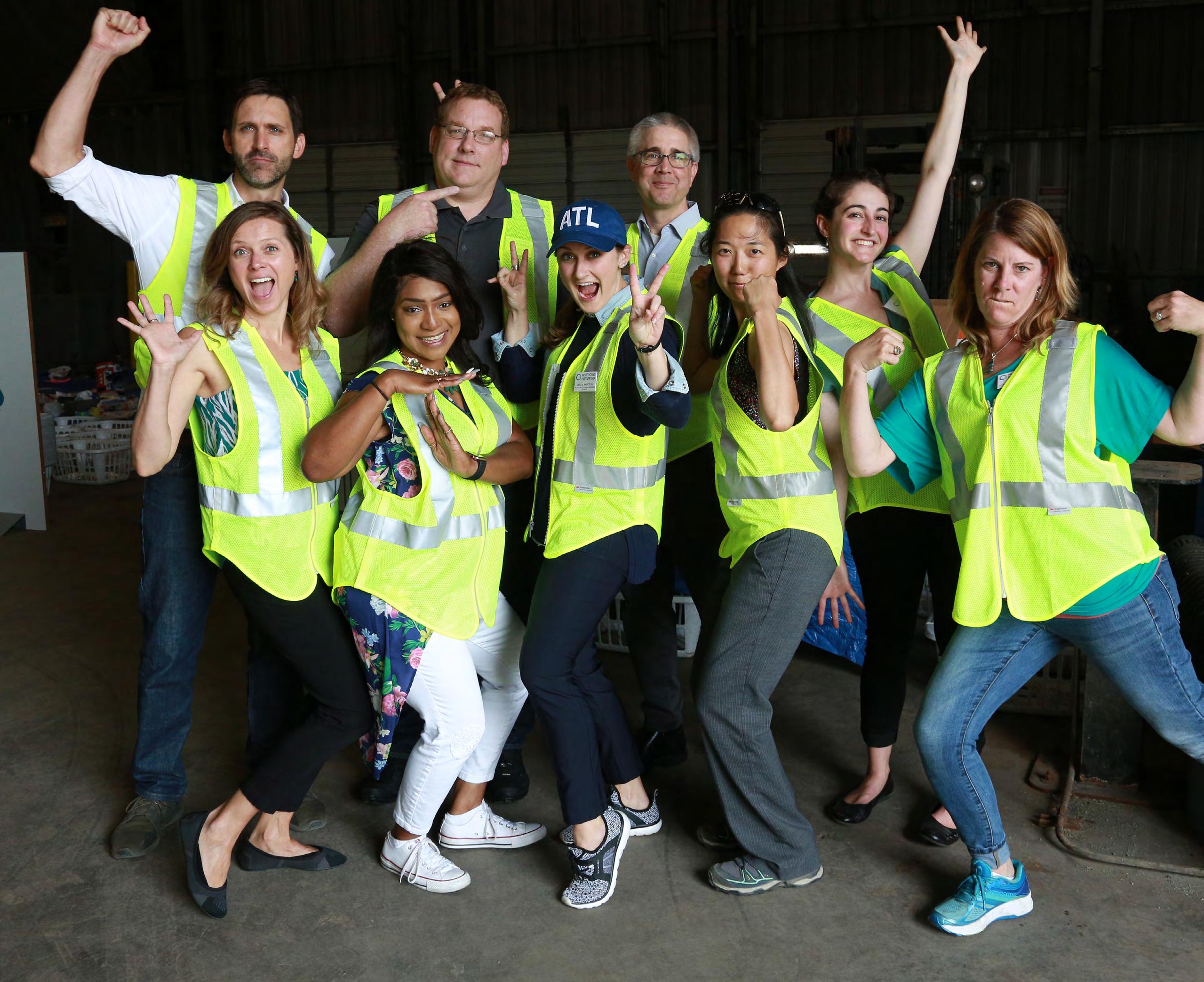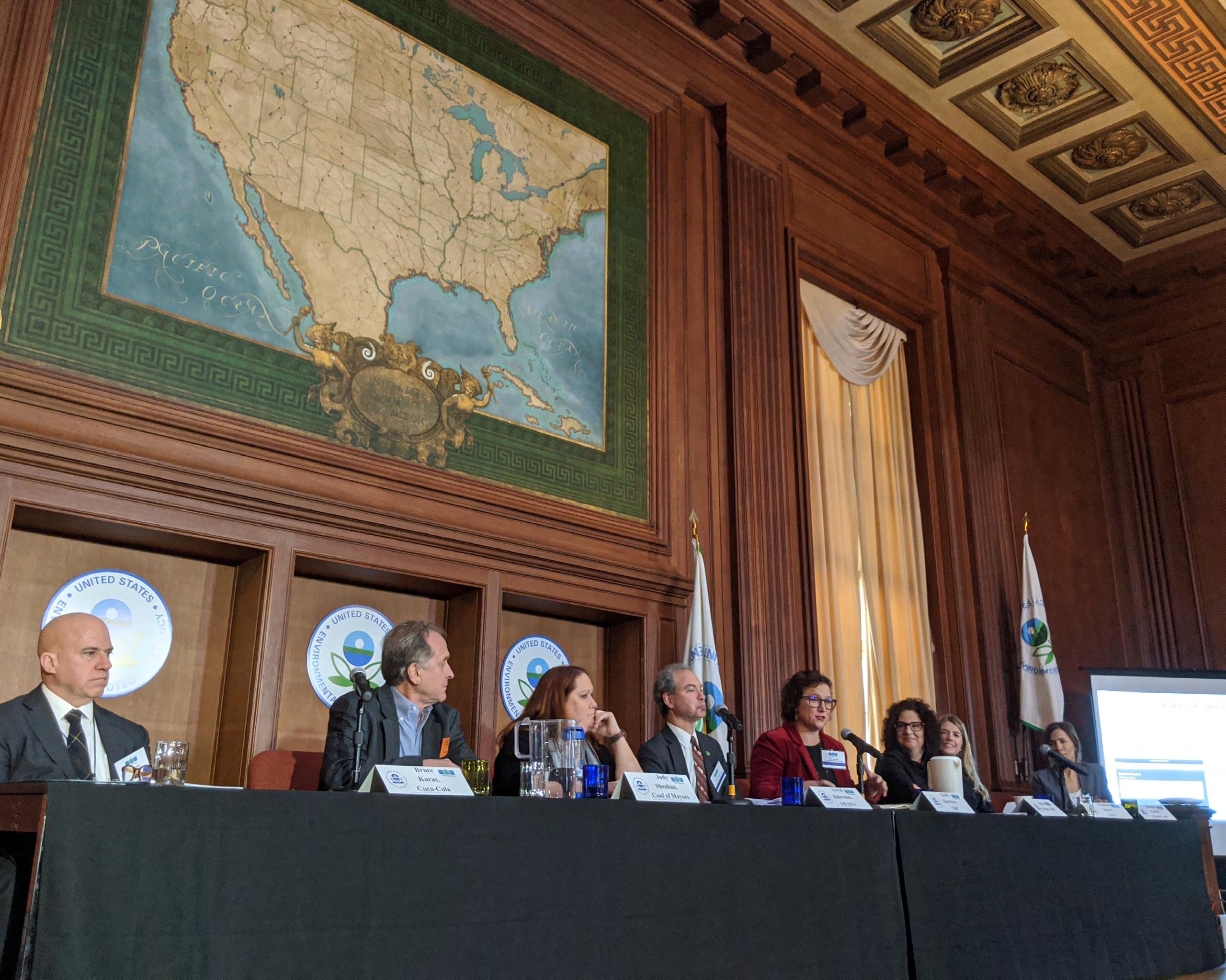
9 minute read
Data to Drive Decisions and Create Behavior Change
Data to Drive Decisions & Behavior Change
LEVERAGING OUR CORE COMPETENCY TO SUPPORT A CHALLENGED SYSTEM
Data is the backbone of every initiative we undertake. It’s the instigator for our new ventures, the constant variable in our special projects, the foundation for how we change citizen behavior, and the benchmark by which we measure our success. When executing our community grants, we measure the progress of every project to ensure results and tweak the model as needed to generate optimal recovery of recyclables.
When looking at our community data of how citizens recycle, we determine what messaging and images will help citizens know what to and not to recycle and increase public trust in recycling.
Here are a few ways The Recycling Partnership has championed data in 2019, and a look at how our work with data will be a part of our upcoming work in 2020.
A solid understanding of material generation, as well as trends and patterns of commodity recovery, helps define the dimensions of the task at hand in optimizing the curbside recycling system in the U.S. The Recycling Partnership contributes essential data through capture analyses connected to program interventions. We completed six major studies in 2019:
• Central OH – In conjunction with a collaborative project with the Solid Waste Authority of Central Ohio (SWACO) to bring carts to five Ohio communities, this first-of-its-kind study combined two different methodologies to show an increase in overall recovery.
• Red Wing, MN – This study measured an increase in curbside materials and gathered specific data on the generation of plastic film and flexible materials.
• Portland Metro – The Recycling Partnership supplemented funding to an ongoing project to gain insights into generation and capture and to gather more data on film and flexible materials.
• Hillsborough County, FL – This study supplemented a county effort to analyze inbound MRF materials, using a batched sample methodology.
• Denver, CO – To support a project on increasing material capture, a before/after study looked at three different neighborhoods and added data to two previous cycles of studies in 2017 and 2018.
• Sarasota County, FL – A before-and-after look at the impacts of a large-scale distribution of carts. The first phase of capture analysis was conducted with a special focus on e-commerce and pizza boxes, which gave us critical insights into the generation and capture of those materials. A second sort will be conducted in 2020.
These studies expanded The Recycling Partnership’s substantial material generation and capture rate dataset, which in turn informs our strategies to deliver our vision of a high-performing U.S. curbside recycling system.
National Residential MRF Map Release
Material Recovery Facilities (MRFs) are where collected curbside materials move to market. To help track and understand the relative presence of these critical operations, The Recycling Partnership released its online, interactive Residential MRF Map in October 2019. The map is the first public display of residential processing infrastructure in the U.S.
Because good data helps everybody across the recycling system, The Recycling Partnership invites users to provide active feedback to make sure the map is as accurate as possible.
Since the launch of the MRF Map, more than 1,000 users have visited the site to obtain information about MRFS around the country.



Municipal Measurement Program (MMP) Debut
What if there was a platform for communities to record and track their recycling performance using standardized metrics and terms? Thanks to a partnership with Emerge Knowledge, The Recycling Partnership launched this type of platform in 2019 with the release of the Municipal Measurement Program (MMP). In its first year, MMP attracted submittals from 135 individual communities from 35 states, representing a spectrum of size, geography, and collection services. Cities from Alaska to Florida and from North Dakota to New Mexico completed MMP reports. The list will only grow in 2020 and helps give us a greater picture of the U.S. recycling system.
Behavior Change Studies
Experts estimate that the average person make 35,000 choices per day. For most people, those choices are shaped by a myriad of conscious and unconscious thoughts, personal and cultural values, and rational and irrational habits. So, when we set out to influence sustainable decisions, to unlock potential instead of creating waste, we are setting out on a critical quest – which can cumulatively result in millions of tons of recyclables either going back to use or going to waste. Those decisions then create even more data for us to use as the foundation for new ventures and new actions to unlock supply of recyclable material.
In order to further our understanding of how citizens think about recycling, how they know what to and what not to recycle, and what motivates citizens to recycle, The Recycling Partnership completed five major studies in 2019:
• Earth Day Survey – How does climate change impact millennials? How do Americans feel about recycling? This national online survey helped us to understand better how citizens feel about recycling as a public service and helped show the impact of climate change on our personal lives as Americans.
• Houston – How do Houstonians get their information about recycling and do they know what to throw?
We asked citizens of the City of Houston these questions and more in focus groups and an online survey. • Denver – Do Denver citizens know what to throw into their recycling and how do they feel about recycling?
We asked these questions and more through a phone survey of Denver citizens.
• Atlanta – Who influences Atlantans most about recycling and where do citizens get their information? To help find these answers, we asked citizens of the City of Atlanta through a focus group and an online survey. • West Coast – Why are plastic bags, needles, and batteries ending up in the recycling stream? To help understand citizen behavior, we asked citizens of California, Oregon, and Washington how they get rid of certain recyclable and non-recyclable materials in their households.
These studies give The Recycling Partnership insight into what motivates citizen behavior and how we can help them know what to throw into their recycling and how they feel about recycling.
2020 State of Curbside
As a complement to the Bridge to Circularity report, The Recycling Partnership’s 2020 State of Curbside Recycling report presents a comprehensive overview of the current supply system to meet the raw material demands of the paper, metal, glass, and plastics industries. The curbside system is highly dependent on healthy local curbside programs to capture as
much of the 37.4 million tons of single-family home recyclables as possible each year. A current recovery rate of 32% shows a good foundation provided through the curbside services of thousands of communities, but also clearly room for additional deployment of best management practice solutions.
Communities are challenged by market conditions that reduce their motivation to expand and improve their programs, and they need support in the form of access to infrastructure capital, technical assistance to address issues like inbound contamination, and policies that encourage program growth. Like the Bridge to Circularity report, The Recycling Partnership’s 2020 State of Curbside Recycling report calls on all stakeholders, and especially brand companies, to do something new, different, and substantial to build robust curbside recycling material supply.
To build out critical information for the 2020 State of Curbside Recycling Report, our staff created and distributed a national survey of community recycling programs, exploring all the angles of program performance, from containers to tons, households served, containers used, participation rates, inbound contamination, program funding, and more.
We received an amazing response from more than 430 cities, counties, and regional and tribal governments from across the U.S., increasing our knowledge and awareness of program status and the challenges communities face.
Good Data is Critical to Effective Solutions
Through emerging partnerships with today’s biggest tech firms, we are building a system that can keep national recycling information up to date. We are leveraging machine learning, data automation, and computer vision to check 8,000 communities for changes in their material guidelines and to update our standardized database. Our goal is to provide this information where consumers are already looking for it: in search engines, smart speakers, and virtual assistants.
This initiative will cover more than 75% of the population and will collect data on each curbside recycling program, including what materials and packaging are accepted, what types of containers are provided, and how citizens sign up. This data will provide the first living national
picture of where each commodity is accepted. With end markets that continue to evolve, the reduction of exports to China, and most recently, the COVID-19 pandemic affecting collection, changes can have immediate effects on local programs. There is a need for national database to account for these changes in real time.
Providing consistent recycling information across the country is a key component of our strategy to regain consumers’ trust in recycling. Combining this with other data that we collect on program performance, material quality, and end markets, we will continue to find gaps in the system where we can leverage investment to increase capture thus drive toward a truly circular economy.
Our behavior change research confirms that Americans care strongly about being less wasteful, protecting the environment, and ensuring we are good stewards for future generations.
OUR RECENT RESEARCH SHOWED:
81% think we are not doing enough as a society to combat wastefulness
84% of Americans view recycling as a valuable public service
80% say they are recycling as often as they should
In contrast, even though most people say recycling is easy, our data shows that people are not recycling what they could.
Within households that are participating,
55% of common recyclables are mistakenly placed in the trash
~20% admit to recycling items even when they are not sure if it is accepted
5% of respondents say they don’t recycle, citing lack of convenient recycling and small households.
Recycling, choosing things made with recycled content, and supporting brands who are making a positive impact are easy ways choices can align with values and the trend is on the rise.
~80% say they are more conscious of supporting positive companies than they were five years ago.
In fact, they would go out of their way, would pay more (26% more), would stop supporting companies who fall short (45%) of their personal sustainability values. In fact, more than a third (37%) would vocally oppose a company who they do not view as sustainable.






